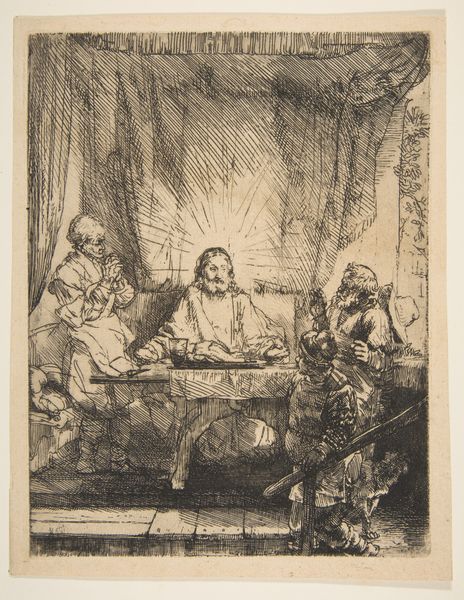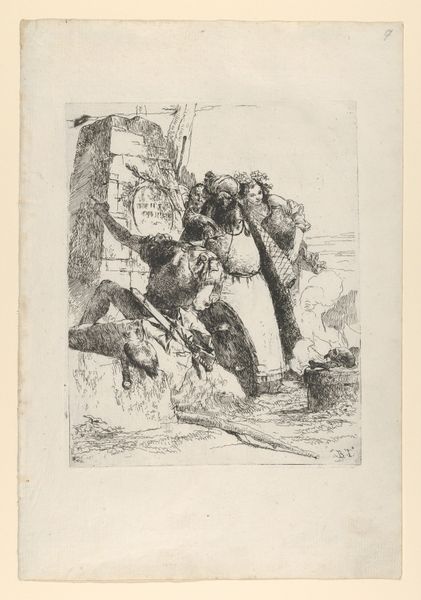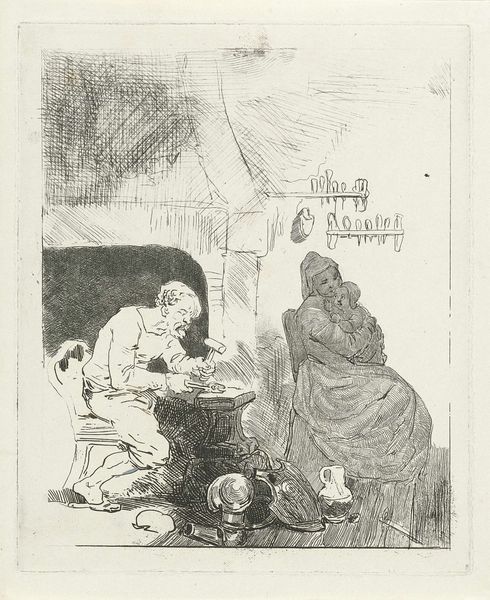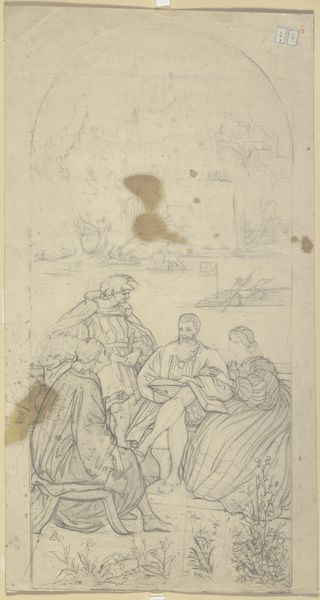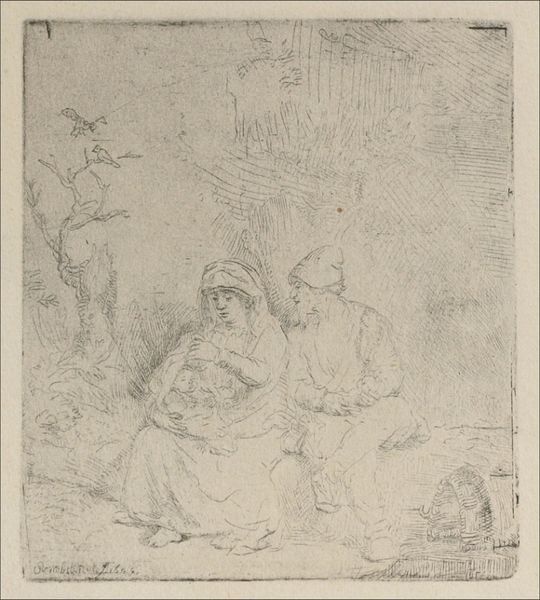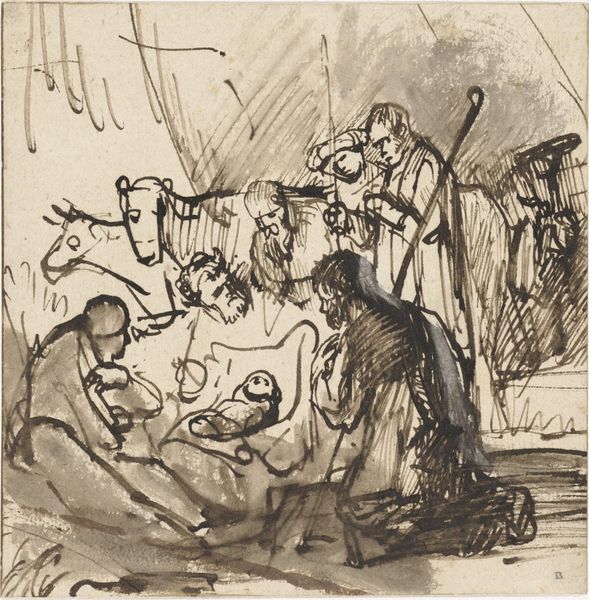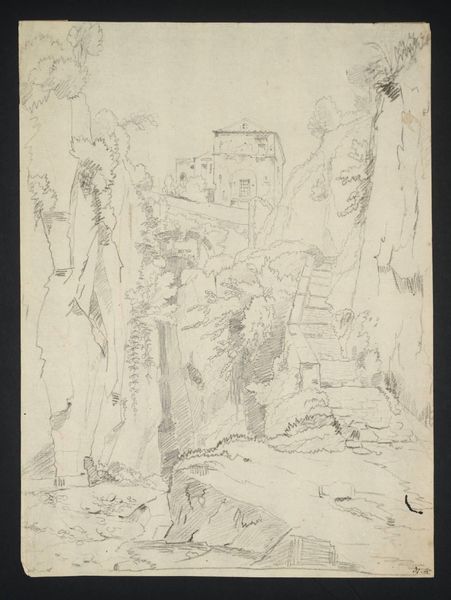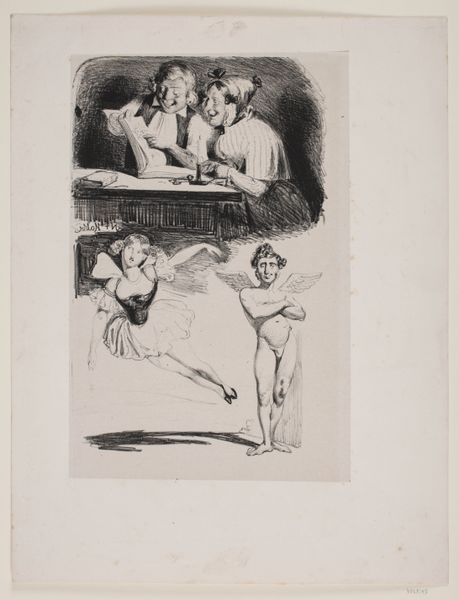
drawing, pencil, pen
#
drawing
#
narrative-art
#
impressionism
#
pen sketch
#
figuration
#
pencil
#
pen
Copyright: Public Domain: Artvee
Curator: What a fascinating drawing—it looks like a whirlwind of impressions caught on paper. Editor: It does have a restless energy, doesn’t it? I sense a blend of anticipation and perhaps, a slight unease hanging in the air. Curator: Well, this is James Ensor’s "The Supper at Emmaus," created between 1885 and 1886, using both pen and pencil. It captures that pivotal moment when Jesus reveals himself to his disciples. Editor: Ah, Ensor! That throws a different light on it. Given his anti-establishment stance, one can assume that the disciples aren't neutral figures within his broader criticism of societal power dynamics and religious institutions of his time. The very materiality, this fleeting sketch-like quality, makes me wonder if it wasn't his interest to portray faith in any classical, glorified way. Curator: Exactly! Notice how he utilizes hatching and cross-hatching? The frantic energy conveyed hints at the immediacy of the event, but also suggests a rougher, less polished form than traditional religious painting. Look closely; you see the frantic, almost desperate quality of the lines? The rapid execution must have demanded incredible dexterity. Editor: I am intrigued by what appear to be symbolic undercurrents: this image of the 'Last Supper' challenges notions of shared communion by portraying subjects whose bodies are distorted by suffering. By doing this, the drawing could represent something other than religious dogma. Curator: His application definitely blurs that line. The physical act of drawing, the pressure of the pencil, the choice of humble materials—they all contribute to a grounded experience. No gilded frames or masterful illusions here. It’s the raw materiality that counts. Editor: Absolutely. This sketch opens pathways into larger narratives around institutional structures, religious doubt and, potentially, challenges the established canons within art itself by presenting a different vision. Curator: So true. Thinking about his choices really highlights how artwork can function as an active part of a cultural movement. It is fascinating how all these ideas about labor and social meaning can exist even in a drawing. Editor: Yes, thank you, now I think about Ensor with completely new eyes! Curator: It's a pleasure.
Comments
No comments
Be the first to comment and join the conversation on the ultimate creative platform.
